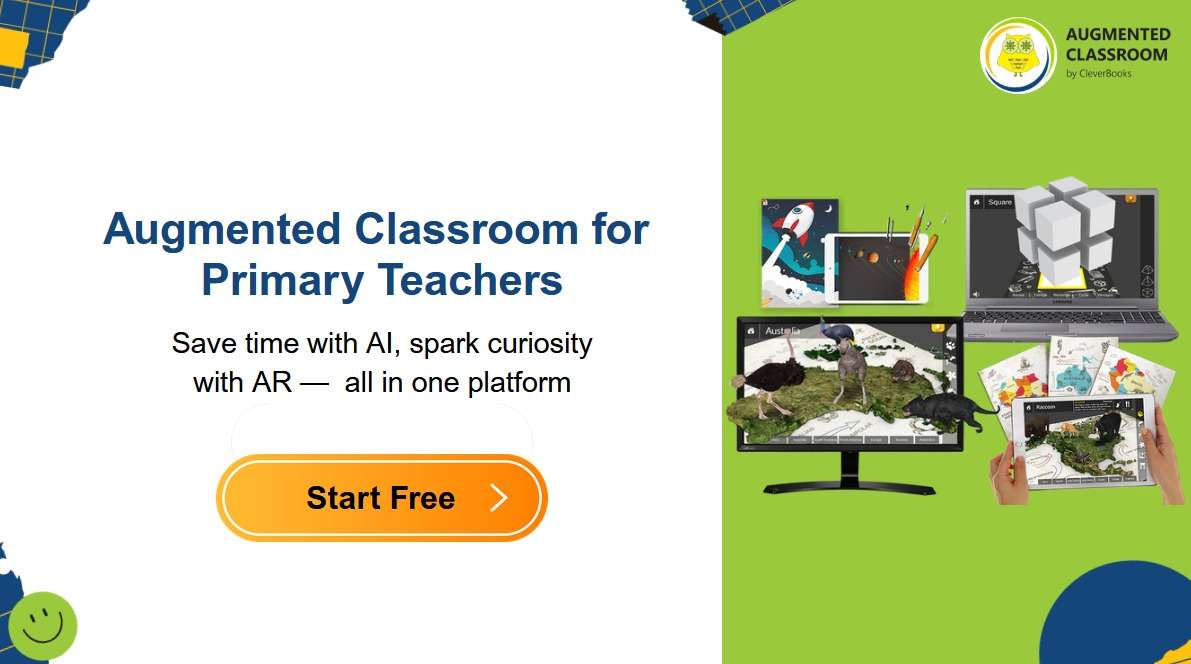This term, our Grade 1 students embarked on the PYP Unit of Inquiry “How the World Works.” The central idea for this unit revolves around understanding the natural world, patterns in nature, and how human curiosity and creativity help us make sense of it. Traditionally, we use books, videos, and classroom experiments to foster these understandings. This year, however, we introduced a new dimension—Augmented Reality (AR) through CleverBooks’ Augmented Classroom (ARC Geography and ARC Create apps)—and it transformed the inquiry process in exciting ways.
Why AR for Grade 1 Inquiry?
Young learners are naturally tactile and curious. They want to touch, move, and see how the world connects. AR gave our students the ability to interact with concepts like landforms, weather systems, and human-made structures in 3D space, making abstract ideas both visual and experiential.
How We Used Augmented Classroom
- Tuning In – Wondering About the World
We started with the ARC Geography app. Students used tablets to explore continents, oceans, and natural features right on their desks. Instead of passively looking at a flat map, they could spin the globe, zoom in on mountains, and “walk” around landmarks. This sparked many “why” and “how” questions that students were able to ask the AI assistant within the app, which perfectly aligning with the inquiry cycle. - Finding Out – Patterns in Nature
As we explored weather systems and natural phenomena, ARC Geography allowed us to visualize how climate zones connect to regions of the Earth. Students began to notice relationships between location, weather, and the way people live. This hands-on exploration helped them see patterns that would have been harder to grasp in 2D. - Sorting Out – Creating with AR
Using ARC Create, students became designers and makers. They built their own mini “towns” in AR and 3D to explore how humans interact with the environment. This process shifted them from consumers of content to creators of knowledge. - Going Further – Asking New Questions
The ability to build and explore in AR encouraged deeper questioning: What if a volcano erupted near a town? Why are deserts found in some places but not others? How do rivers shape the land? AR supported these “what if” scenarios in a safe and imaginative way. - Reflection and Sharing
At the end of the unit, students shared their AR creations with classmates. They proudly explained how their models represented natural systems, showing confidence in both their scientific understanding and creative thinking.
Added Value for the PYP Inquiry
- Active Engagement – Students were fully absorbed in the learning process, treating each session as a discovery journey.
- Concrete Understanding of Abstract Ideas – Concepts like landforms, patterns, and natural systems became accessible through interactive 3D models.
- Collaboration and Communication – Working in pairs or groups, students discussed their observations and co-created AR projects.
- Student Agency – ARC Create empowered students to design and share their own models, fostering ownership of learning.
Conclusion
Augmented reality enriched our “How the World Works” unit by giving Grade 1 learners a hands-on, inquiry-driven way to explore Earth’s systems. The combination of ARC Geography for exploration and ARC Create for building and experimenting not only supported conceptual understanding but also nurtured curiosity, creativity, and collaboration.
By blending AR technology with the IB PYP framework, our students didn’t just learn about how the world works—they experienced it in ways that felt alive, memorable, and meaningful.

